Rare Rides Icons: The History of Imperial, More Than Just a Car (Part IV)

After its successful introduction in the Twenties, an Airflow-shaped misstep in the Thirties, and a return to its earlier formula in the latter part of that decade, big changes were in order for the new Imperial of the 1940s.
Around the time headlamps and fenders became an integrated feature of a car’s body instead of free-standing entities, the Imperial was integrated into the rest of the Chrysler lineup. American coachbuilding as an entity – a luxurious custom body applied to a mass-produced chassis – was winding down about that time. In fact, very few of the established American coachbuilders of the Twenties and Thirties would make it out of the Fifties intact.
This change in methodology was readily apparent for the new fourth-generation Imperial of 1940. Gone were the variety of wheelbases, the exclusive custom bodies built outside Chrysler’s domain, and Imperial-specific engines. There was but one basic Imperial layout in 1940, sold officially as the Imperial Crown Series C-27. Chrysler offered a total of four body styles, only three of which were built in any number. Those three were factory options: The six-passenger Sedan, eight-passenger Sedan, and eight-passenger Limousine. The fourth option held six passengers and was actually a coachbuilt car: The Parade Phaeton by Derham Body Company (1887-1956). All cars shared the same 145.5-inch wheelbase, so all Imperials in 1940 were larger overall than any available car of the prior generation, even topping the size of the 1937 only Series CW Custom. Standard Sedan models of 1940 were 225 inches long, while Limousine versions were 235 inches. There was just one engine on offer in the long-lived fourth Imperial, a 323 cubic inch (5.3L) inline-eight.
Initially, the only transmission on offer was the three-speed manual with Fluid Drive that we learned about in the prior installment of this series. A three-speed Vacamatic arrived in 1941. Vacamatic was the first semi-automatic transmission ever offered by a large manufacturer. Chrysler developed the technology to compete with automatic transmissions from other manufacturers. The Vacamatic still used a clutch, but only to change the transmission’s range. The clutch was not used consistently in normal driving. Vacamatic had four gears, automatically shifted through by vacuum cylinders. The column shifter functioned as the range selector, and offered Low, High, and Reverse. Low was for gears one and two; High was for gears three and four. High was used for normal driving, as the car started out in third and clunked automatically into fourth at around 20 miles per hour without the use of a clutch. Faster acceleration from a standstill was possible by starting in Low, using the clutch, and swapping quickly to High range. Clunky and a bit odd to use, the Vacamatic proved itself an incredibly reliable transmission. To stop the 3,900 to 4,500-pound Imperials, all cars used hydraulic braking from Lockheed. In a nod to luxurious safety, two-speed electric wipers were fitted as standard.
Aside from the obvious special order nature of the Parade Phaeton, new Imperials shared their styling entirely with lesser Chrysler models for the first time. Cars like the Windsor, Town & Country, New Yorker, and Saratoga all looked almost identical to the Imperial. To determine if the car was an Imperial, it was necessary to look on the front fender underneath the hood for the scripted model name or measure Imperial’s longer wheelbase. The Imperial of course featured nicer interior appointments than other models and had more luxury equipment included as standard. Other special interior features reserved for Imperials included storage bins within the front seatbacks, and footrests for the rear passengers.
In Limousines the storage areas were used for jump seats instead, which allowed for eight passengers. The Limousine went a step further with a class divide in the form of a retractable glass partition between the front and rear seats. Said seats were different too, as the driver sat on gauche leather while rear passengers enjoyed quiet and dignified wool. The Limousine was quite a bit more expensive than the Sedan, as one would expect, and asked $2,695 ($53,100 adj.). An Imperial Special Town Sedan in 1941 asked for a much more affordable $1,675 ($32,600 adj.).
As 1941 arrived, Imperial rechristened itself Crown Series C-33. New for that year were nicer interior upholstery options, and tires from Goodyear attached to new Safety Rim steel wheels. Newly available were an effortless convenience we expect today from economy cars: electrically operated windows. Again the Imperial’s body reflected what was en vogue with the rest of Chrysler’s lineup that year. Once more the Derham Parade Phaeton was offered, and it found one customer in 1941: The president of Briggs Manufacturing Company, Walter O. Briggs, wanted an Imperial of landaulet variety. The purchase was especially notable as Briggs supplied its own bodies to Imperials in the 1920s. Briggs continued making car bodies (not for Imperial) through 1953, at which point Chrysler bought its operations. Briggs owned another former provider of Imperial bodies, LeBaron, since 1926. Chrysler would make good use of that name in particular for quite some time.
1942 was a very short production year at Chrysler, as the United States entered World War II in December 1941. Given car production would be halted in February that year, Chrysler dedicated most of its factory resources to the construction of the higher volume New Yorker. Again there was only one Imperial on offer, now called the C-37. Derham’s offerings expanded beyond the Parade Limousine, and into town cars and standard length four-door convertibles. Their luxurious limousine reached the three grand mark, at $3,065 ($53,500 adj.), but was built for only a few months.
There was no further U.S. car production until 1946 when the Imperial Crown returned once more. Wearing its final series number this generation, C-40, Imperials were built from 1946 through 1948 with few changes. The cars were largely unchanged carryover examples from before the war (like every other manufacturer’s offerings). Features continued largely as before, though sales slowed considerably in the post-War market. In three years Chrysler moved just 1,400 Imperial Limousines in total. Though it was a stale product, by its final year in 1948 the Limousine’s price had increased to $4,767 ($55,000 adj.).
Imperial closed out the Forties in a weak position, but Chrysler was prepared to enter the Fifties with lots of Imperials. Chrysler was about to expand the Imperial lineup to an extent it hadn’t seen since near its inception. More in Part V.
[Images: Chrysler]

Interested in lots of cars and their various historical contexts. Started writing articles for TTAC in late 2016, when my first posts were QOTDs. From there I started a few new series like Rare Rides, Buy/Drive/Burn, Abandoned History, and most recently Rare Rides Icons. Operating from a home base in Cincinnati, Ohio, a relative auto journalist dead zone. Many of my articles are prompted by something I'll see on social media that sparks my interest and causes me to research. Finding articles and information from the early days of the internet and beyond that covers the little details lost to time: trim packages, color and wheel choices, interior fabrics. Beyond those, I'm fascinated by automotive industry experiments, both failures and successes. Lately I've taken an interest in AI, and generating "what if" type images for car models long dead. Reincarnating a modern Toyota Paseo, Lincoln Mark IX, or Isuzu Trooper through a text prompt is fun. Fun to post them on Twitter too, and watch people overreact. To that end, the social media I use most is Twitter, @CoreyLewis86. I also contribute pieces for Forbes Wheels and Forbes Home.
More by Corey Lewis
Latest Car Reviews
Read moreLatest Product Reviews
Read moreRecent Comments
- Ajla IMO, something like this really should be naturally-aspirated.
- Kjhkjlhkjhkljh kljhjkhjklhkjh Unless they are solid state batteries you BAN THEM. I like EVs... but EVs like to burn ... for days
- Kjhkjlhkjhkljh kljhjkhjklhkjh uh .. it looks like a VW golf got the mumps
- Kjhkjlhkjhkljh kljhjkhjklhkjh I CANNOT WAIT FOR SOCIAL SECURITY TO GET GUTTED.. No i am really serious. I am insulated thanks to 24 years at Symantec then Broadcom .. tons of retirement cash. but all the blue hairs and low income trump voters are going to lose benefits and jobs and i get to laugh allllll dayyyyy long in about 2-3 years.. CANNOT WAIT, POPCORN READY.
- Kjhkjlhkjhkljh kljhjkhjklhkjh no. to many '''''americans'''' just want a CUV or SUV according to sales numbers



























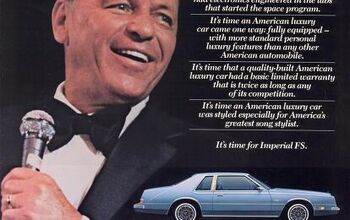
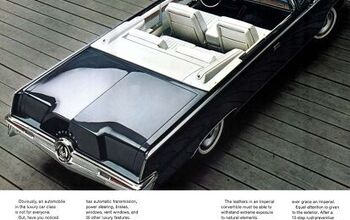
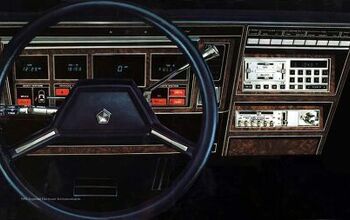
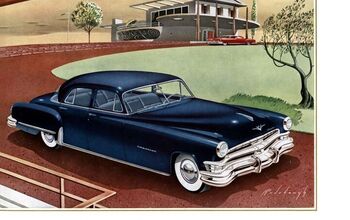
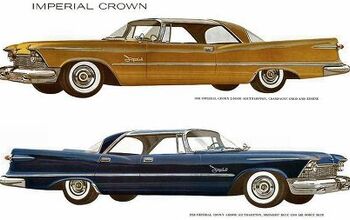










Comments
Join the conversation
Excellent series. :)
My dad had a '42 Chrysler Windsor with the Vacamatic. He found that it would shift into High Reverse as well, if you went fast enough.